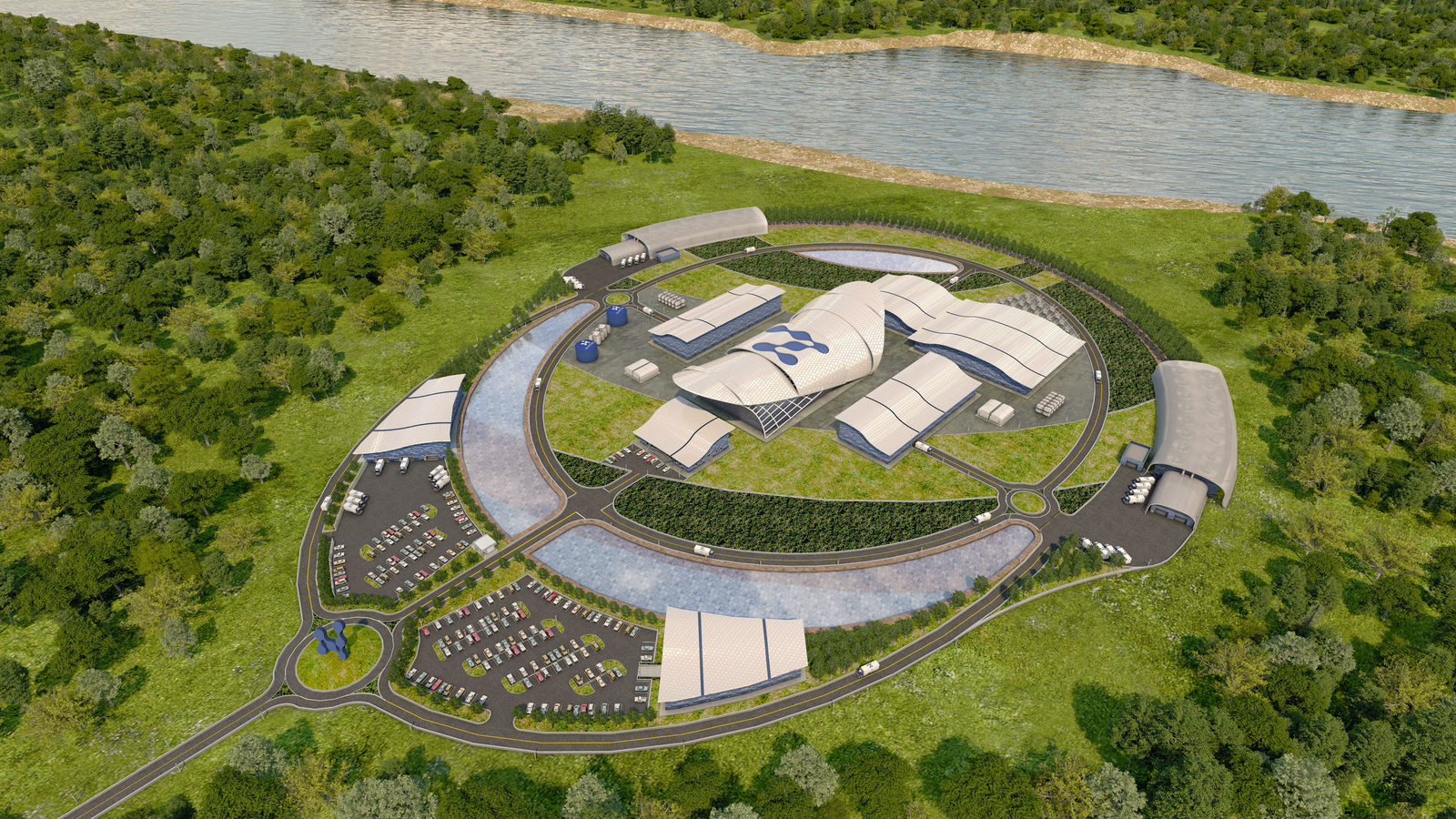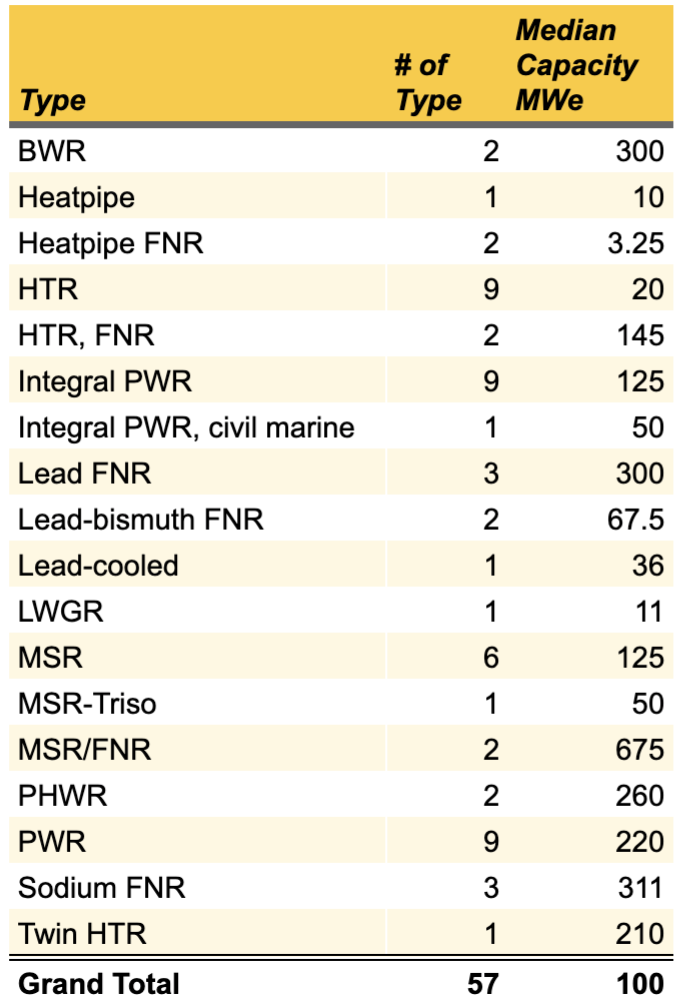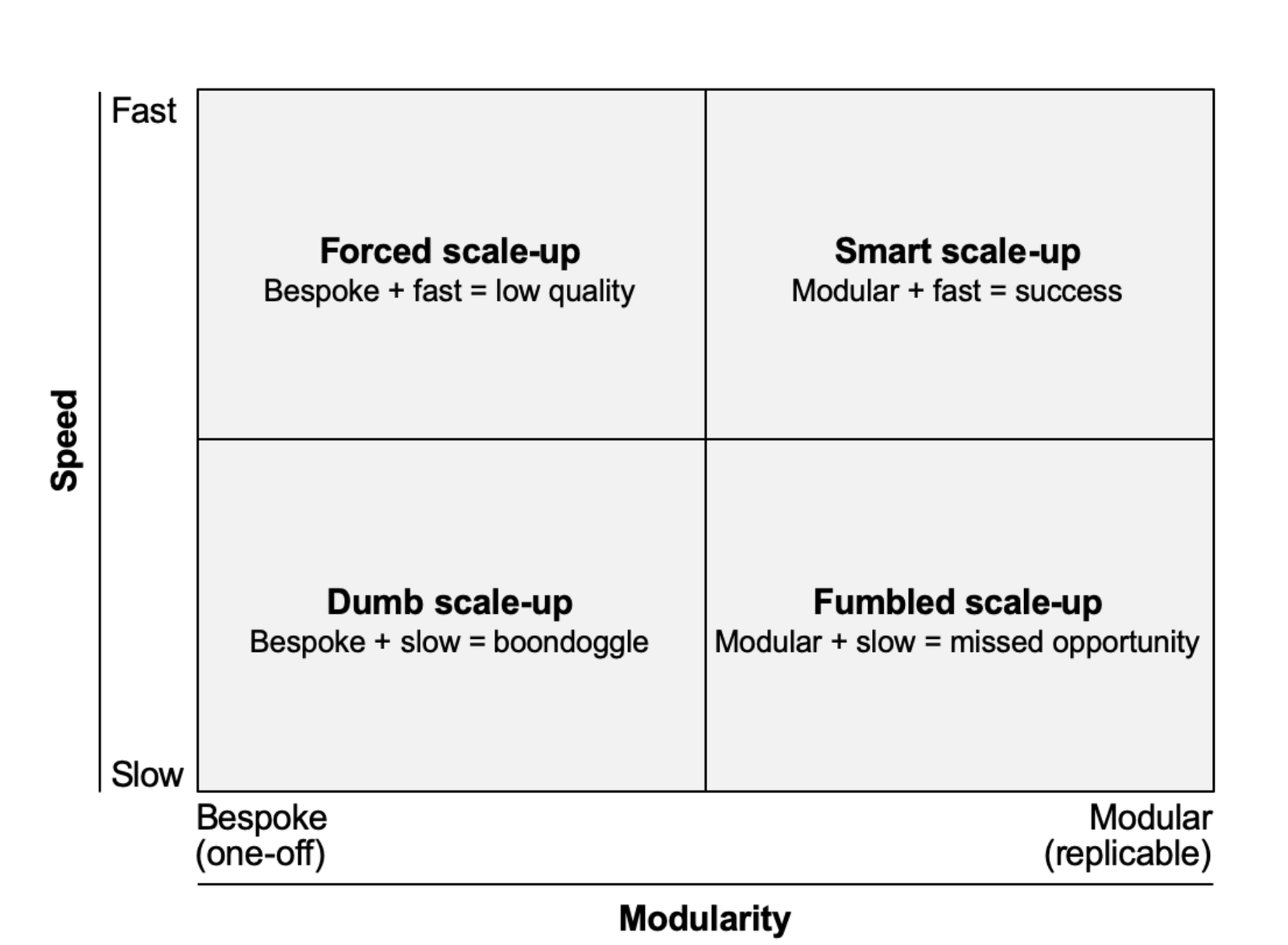Small modular nuclear reactors were tried in the 1950s and won’t be better today


· 13 min read

Like hydrogen, small modular nuclear reactors have been seeing a resurgence of interest lately. Much of that is driven by governmental policies and investments focusing on technology. Much of it comes from the nuclear industry. And inevitably, some come from entrepreneurs attempting to build a technology that they hope will take off in a major way, making them and their investors a lot of money.
Small modular reactors won’t achieve economies of manufacturing scale, won’t be faster to construct, forego efficiency of vertical scaling, won’t be cheaper, aren’t suitable for remote or brownfield coal sites, still face very large security costs, will still be costly and slow to decommission, and still require liability insurance caps. They don’t solve any of the problems that they purport to while intentionally choosing to be less efficient than they could be. They’ve existed since the 1950s and they aren’t any better now than they were then.
First, let’s explore briefly the world of small modular nuclear reactors (SMNR) or small and medium reactors (SMR). The most common acronym is SMR, but you’ll see both.
As it says on the box, they are nuclear generation devices, specifically nuclear fission thermal generation. That means they use fissile material heat emissions, to heat a liquid which creates steam which drives steam turbines to generate electricity. Technically, they are like a coal-generation plant, but with the heat provided by the decay of uranium instead of the burning of long-buried plant matter
There are a handful of differences between them and traditional nuclear generation reactors. The biggest one is that they are smaller, hence the ‘small’ and ‘medium’ in the names. They range from 0.068 MW to 500 MW in capacity, with the International Atomic Energy Association using small for up to 300 MW and medium for up to 700 MW.
Despite the buzz, this is not new technology. The first nuclear generation plant was a Russian 5 MW device that went live in 1954. Hundreds of small reactors have been built for nuclear powered vessels and as neutron sources. This is well trodden ground. Most of the innovations being touted were considered initially decades ago.

In the seven decades since the first SMR was commissioned, 57 different designs and concepts have been designed, developed and, rarely, built. Most of the ones which are built are doing what nuclear reactors do, getting older without new ones being built to replace them.

The Russian models are far-north icebreaker power plants being considered for land-based deployment in remote northern towns, with the Siberian one at end of life. The Indian ones are 14 small CANDU variants in operation, most decades old now. The Chinese one is coming up to end of its 40-year life span as well.
The Argentinean model has been in construction on and off for over a decade with work stoppages, political grandstanding, and monetary problems. It may never see the light of day.
The Chinese HTR-PM, under construction for the past decade, is the only one with remotely new technology. When commissioned in December of 2021, it was the first Gen IV reactor in operation.

And to be clear, this isn’t a technology, it’s many technologies. Across the decades, 57 variants of 18 types have been put forward. None of the types can be considered to be dominant.
Advocates for SMRs typically make some subset of the following claims:
None of these are actually good arguments.
First, traditional nuclear is safe already, dominantly due to passive safety features in the majority of operational reactors and lots of attention to management and operations. Chernobyl was a bad design. Fukushima was deeply bad siting and operational decisions. Those siting and operational decisions have resulted into a cost which is likely to be around a trillion US Dollars to the overall Japanese economy when all the bills are counted. SMRs aren’t immune to bad siting and bad operational decisions, but there have been some lessons learned by the industry.
Safety concerns aren’t why nuclear is failing in the marketplace, economics are why nuclear is failing in the marketplace.
Second, in order for economies of scale to kick in, a manufacturing facility has to build hundreds or thousands or millions of the same thing and have a projected future market for hundreds or thousands more. The field is littered with 18 different types of technologies and many competing designs within those types. There is no coherent single technology which will dominate the field. Each country engaged in SMR research has its own preferred technologies and its own companies to support.
Bent Flyvbjerg is one of the foremost global experts on project planning, the First BT Professor and Inaugural Chair of Major Programme Management at Oxford University's Saïd Business School and the Villum Kann Rasmussen Professor and Chair of Major Program Management at the IT University of Copenhagen. A few months ago, he and his co-author on a new book reached out to me. An assessment I’d published of the natural experiment of deploying wind, solar and nuclear in China from 2010 to 2020, where conditions were globally most favorable for nuclear, was strongly aligned with the focus of his book on what makes infrastructure projects successful and unsuccessful. As a result, they will be including my findings and a graph or two in the upcoming book.
I took the opportunity to ask Flyvbjerg about Wright’s Law, or the Efficiency Curve if you are a fan of Boston Consulting Group, who claimed it for their own. That law or curve says that if you double the manufacturing of something, you reduce the cost per unit of manufacturing by 20% to 28%. Much of Flyvbjerg’s work is at the tension point between widely scaled, modular projects, and singular, bespoke megaprojects.

The question I had for Flyvbjerg was when Wright’s Law kicked in. His answer was illustrative. You had to have at least dozens of items manufactured before statistically significant changes starting appearing. That means perhaps 72 SMRs before doubling starts creating efficiencies, and 144 before the ~25% gain, and 288 before the next gain and 576 before the next gain. Each doubling of production only sees increased efficiency from the new level, of course, so three doublings only gets you roughly 60% more efficient.
The small modular reactor claims of efficiencies through modularity, in other words, are based on a misunderstanding of the volumes required before efficiencies kick in. In order for any of these designs to see economies of scale, several major countries would have to get together, decide on a single specific technology, form a joint venture with the manufacturer, and commit to building and deploying only that technology. This isn’t a market-based solution, it’s not aligned with the geopolitical strategies of the countries, and so none of these designs will scale beyond perhaps the 14 units of the old CANDU derived Indian design.
Russia is serious about icebreaker and landed small reactors, but Russia isn’t going to shape a global market for them, especially not after their invasion of Ukraine when they have become an international pariah. They might build a few in far northern communities, with predictable concerns. China is the only country doing significant expansion of nuclear generation, and it’s already closing in on double-digits of technology variants, a failure condition. The US could re-focus on small PWRs, but there’s no particular political will at the federal level to push for that.
No scaled manufacturing, no cost reductions. NuScale’s expressed hope is to get its cost of generation down to only double the current wholesale cost of wind and solar generation, around $65 per MWh.
Third, both remote communities and brownfield coal generation plants have major security exposures. As nuclear technologies and fuels are highly proscribed and limited due to nuclear non-proliferation strategic goals, and as concentrated radioactive material is highly desirable for terrorists for dirty bombs, the entire supply, operational and waste chain requires significant overlapping circles of defense.
These requirements don’t go away because the nuclear reactors are smaller.

And these security costs are big, and mostly hidden in federal, state, and municipal subsidies. Remote areas still require these additional security costs, and they will likely be higher simply due to the additional challenges of securing remote areas with high transportation costs. Brownfield coal generation sites don’t become more economically viable with massive security upgrades and unproven technologies.
Without economies of scale, there will be no fast deployment of SMRs. They need to be standardized, shippable units. Right now, the units under construction and NuScale are on track for the median of a decade for construction. NuScale is promising 12 units in operation by 2029, but the $1.4 billion bail-out it received after several municipalities walked away from the rising costs and schedule don’t suggest that’s realistic.
Yes, yes there are, three of them.
First, they don’t take advantage of vertical scaling. As discussed, they are highly unlikely to achieve economies of scale of manufacturing due to the sheer number of competing technologies and the lack of any strategic imperative to resolve that issue.
But in addition to that horizontal scaling challenge, they don’t scale vertically either. Thermal generation units get more efficient as they get bigger, up to a point. That’s why most coal and nuclear generation is closer on a per boiler or reactor basis to a GW of capacity, not a third of that. There are technical reasons for this, but much of it has to do with the optimum diameter of pipes for most efficient fluid and steam transfer compared to the materials required for them. Bigger diameter pipes move a lot more fluid without nearly as much material. SMRs forego those efficiencies of vertical scale. Amusingly, Gates’ Terrapower is designing a 1,200 MW capacity reactor, so they seem to have received the vertical scaling memo. Of course, that just puts them back into the same cost problem as normal reactors.
Second, decommissioning a nuclear reactor is a billion USD, 100-year venture. That’s been shown empirically by reactors under decommissioning in several countries. The US hold back accounts for roughly a third of those costs, so the taxpayer will be on the hook for the rest, about $70 billion. SMRs will require the same duration and proportional cleanup costs. Taking the Nu Scale deployment, there are intended to be 12 60 MW reactors for a total of 720 MW of capacity. That suggests in the range of $720 million for cleanup. While I’m sure SMR advocates expect the reactors to be returned to a centralized processing site for decommissioning, no country in the world has managed to build a centralized nuclear waste repository, so this premise is deeply unlikely.
Third, no nuclear reactor is commissioned with private insurance alone. Every country with a nuclear generation fleet has enacted legislation which caps private liability at some level, and puts any liability above that level onto the shoulders of taxpayers. In the US at present that’s $13 billion for the entire sector, around $131 million per reactor. These sound like big numbers, but as was pointed out earlier, Fukushima’s total liability is in the trillion USD range. The number of countries willing to sign up for that liability is shrinking globally, not growing.
At present we see SMR earmarked funds in both Canadian and US federal budgets, $150 million in Canada and 10 times as much in the US, mostly for research and development with the exception of over a billion to NuScale to, in theory, build something. In Canada, four provinces — Alberta, Ontario, New Brunswick and Saskatchewan — have joined forces in an SMR consortium. Bill Gates’ Terrapower has received another $80 million, as has X-Energy from the US DOE.
The failure conditions of small modular reactors are obvious. The lack of a significant market is obvious. The lack of ability to create a clear winner is obvious. The security costs are obvious. The lack of vertical scaling to thermal efficiency is obvious. The security risks and associated costs are obvious. The liability insurance cap implications are obvious. So why is all of this money and energy being thrown at SMRs? There are two major reasons, and only one of them is at all tenable.
Let’s start with the worst one. The Canadian provinces which are focused on SMRs are claiming that they are doing this as a major part of their climate change solutions. They are all conservative governments. Only one of those provinces has a nuclear fleet, although New Brunswick has one old, expensive, and due-to-retire reactor, as well as a track record of throwing money away on bad energy ideas, like Joi Scientific’s hydrogen perpetual motion machines. One of the provinces, Ontario, has been actively hostile to renewable energy, with the current administration cutting up 758 renewables contracts and legislating a lack of recourse as a very early act after election.
So why are they doing this? Because it allows them to defer governmental climate action while giving the appearance of climate action. They can pander to their least intelligent and wise supporters by asserting that renewables aren’t fit for purpose, while also not doing anything about the real problem because SMRs don’t exist in a modern, deployable, operable form yet.
The other major reason gets back to renewables as well. 15 years ago it was an arguable position to hold that renewables were too expensive, would cause grid reliability issues and that nuclear in large amounts was necessary. That’s been disproven by both 15 years of failures of nuclear deployments, but more importantly plummeting costs and proven grid reliability with renewable generation. Now almost every serious analyst agrees that renewables can economically deliver 80% of required grid energy, but there is still debate from credible analysts about the remaining 20%.
Mark Z. Jacobson and his Stanford team are at the center of this debate. Since the late 2000s, they’ve been publishing regular studies of increasing scope and sophistication on the thesis of 100% renewables by 2050. The 2015 publication saw a lot of pushback. At the time, my assessment of the fundamental disagreement was that the people who published a criticism of it thought the last 20% would be too expensive, and that both nuclear and carbon capture and sequestration would be necessary and scaled components. As a side note, some of these same analysts are now saying it’s the last 10% of the problem which is the challenge, which is indicative of a problem with their thesis.
Personally, I’ve done various aspects of the math, looked at grid reliability and transformation data from around the world, and looked at ancillary services requirements, and I think Jacobson and team are right. Further, that since we all agree that renewables are fit for purpose for 80% of the problem we should deploy them as rapidly as possible.
However, it’s very reasonable to make a side bet or two to ensure coverage of that last 10-20%. I don’t mind research dollars spent on SMRs, which is all most of the SMR expenditures amount to, outside of the NuScale bailout (which is added to the Ohio $1.3 billion bailout, which is added to the annual $1.7 billion overt federal subsidy, which is added to the annual hidden $4 billion security subsidy which is added to the $70 billion unfunded cleanup subsidy, which is added to the uncosted and unfunded taxpayer liability). Spending a few tens of millions of dollars in rich countries to ensure that we have that last 20% bridged is reasonable.
But the people asserting that SMRs are the primary or only answer to energy generation either don’t know what they are talking about, are actively dissembling or are intentionally delaying climate action.
A version of this article is also published in Physical Sciences Review, CleanTechnica and The Future is Electric. illuminem Voices is a democratic space presenting the thoughts and opinions of leading Energy & Sustainability writers, their opinions do not necessarily represent those of illuminem.
illuminem briefings

Hydrogen · Energy
illuminem briefings

Energy Transition · Energy Management & Efficiency
Vincent Ruinet

Power Grid · Power & Utilities
The Guardian

Rare Earths · Energy Sources
World Economic Forum

Renewables · Energy
Financial Times

Energy Sources · Energy Management & Efficiency